
All categories
Featured selections
Trade Assurance
Buyer Central
Help Center
Get the app
Become a supplier

(1074 products available)

















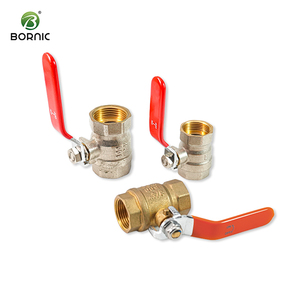
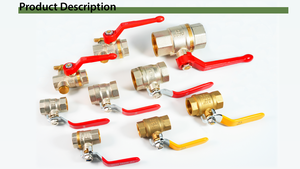





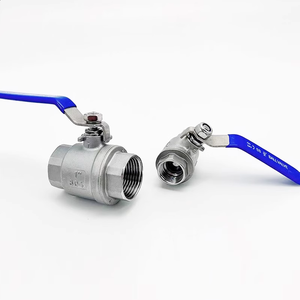
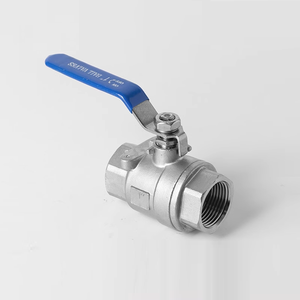
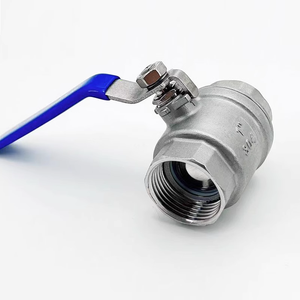





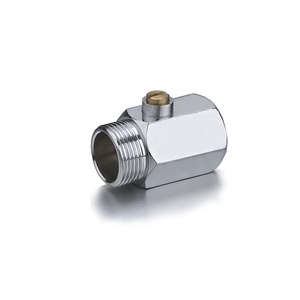

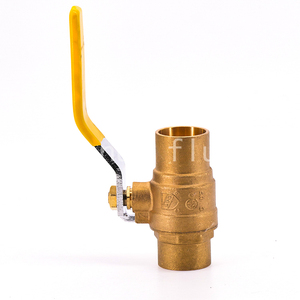
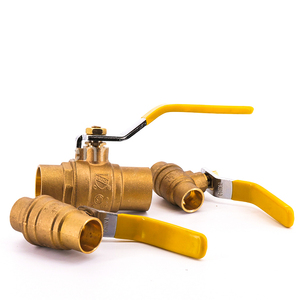

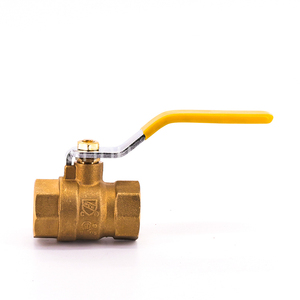

Brass ball valves are well-liked for their strength, and corrosion resistance, and durability compared to other materials. A UPC brass ball valve is a popular choice for plumbing in potable water because it is a Uniform Plumbing Code approved brass ball valve. These valves are commonly used in both residential and commercial settings.
There are several different types of these ball valves that serve distinct functions.
The valve body in the single-piece ball valve is manufactured from a single piece. This means that the valve body cannot be separated into different components. This provides strength, tighter sealing, and enhanced pressure resistance. This type is very necessary for applications where liquids are under high pressure. These types of valves come in different configurations, like threaded, weld, or flanged connections.
As the name suggests, a two-piece valve consists of two separable parts that create the valve body. This design is beneficial because it makes it easier to repair, replace, or service individual parts of the valve. It still provides good durability and a tight seal.
Avoid using a two-piece valve in applications that require a front weld, as the resulting weld will cover up the end of the valve. Look for valves with blowout-proof features. Having a feature that protects the stem ensures safety even if the stem were to fail at any point.
A three-piece valve contains three separate pieces that make up the valve body. This design provides superior flexibility as one section can be removed for repairs while the other two sections remain intact. This is a preferred ball valve in industrial settings that require frequent maintenance. A three-way ball valve can also be used to redirect flow to different areas.
This valve has a wider diameter than the pipe it is installed in. It allows unrestricted flow of liquids or gasses. In contrast, a brass gate valve has a sealing mechanism that restricts liquid or gas flow. The greater pipe opening means less pressure loss and minimal blockage. This reduces the risk of valve wear and tear since liquids will not have to go through narrow spaces.
The compression valve is a type of valve that connects to pipes through a compression fitting. The purpose of this design is to eliminate the need for threaded or welded connections. With a compression ball valve, it becomes so much easier to install or replace valves. These valves are commonly used in copper or PVC piping systems.
As the name suggests, this valve is made from brass instead of other materials. It is used in liquid cooling systems for computers and other machinery. The purpose of such a valve is to easily control the flow of coolant liquids through the system.
There are many applications for these ball valves across multiple industries. Their durable materials and superior functionality make them ideal for heavy-duty use.
Valves are widely used to control the flow of liquids and gasses used in producing goods. With their ability to handle extreme temperatures and pressures, they regulate vital fluids like steam, chemical mixtures, or even high-temperature water used in production processes.
The valves are ideal for using in heating, ventilation, and air conditioning systems. Their sealing mechanisms help prevent air leaks, which boosts energy efficiency. They can withstand the temperature changes occurring in air conditioning and refrigeration systems.
The valves are ideal for controlling the flow of fuels, ballast water, and other liquids within ships. Since they are corrosion-resistant, they can survive long periods of exposure to saltwater. They are also used in piping systems that transport fluids, including water, oil, or gas, through pipelines.
These systems operate under very high pressure and require valves that can manage such extreme conditions. The brass ball valves are strong and can withstand high-pressure environments without deforming or shattering, making them essential for regulating fluid power and maximizing machinery efficiency.
Valves are integral parts of fire protection. They regulate water supply in sprinklers and hydrants for emergencies. Manufacturers make fire prevention valves from durable, reliable materials that can handle extreme weather and temperatures.
In this industry, cleanliness is very important. That is why vintage brass valve manufacturers make these valves from sanitary materials. They regulate and shut off flow in liquid stock, beer, wine, and other water-based drinks. Look for valves that meet the food and drink approval standards of the local area.
Brass gate valves and ball valves share many similarities since they are both used to control the flow of liquids and gasses. But while both are made from brass and have UPC approvals, many differences set them apart.
For one, the key sealing mechanism difference is that gate valves use wedge-shaped seals, while ball valves have spherical sealing mechanisms. Manufacturers make ball valves with materials suitable for high-pressure applications. In contrast, gate valves are ideal for low-pressure situations. In terms port opening, a ball valve has a larger port opening than a gate valve, which means less pressure loss. This feature also minimizes the risk of wear and tear. A gate valve, however, has a threaded opening that needs to be opened and closed at a quarter turn. Gate valves are more time-consuming to open or close than ball valves.
Brass is a corrosion-resistant metal. It will withstand wear and tear for many years, making it a strong and durable valve. Because of this strength, ball valves can control high pressures while resisting leaks.
The sealing mechanism is a crucial part of the valve. In a ball valve, the ball has a hole through which the liquid or gas will pass. This spherical ball sits between 2 seat rings. They are made of elastic materials like PTFE. These seat rings create tight seals on either side of the ball.
Avoid the compression and coolant ball valves in industrial and commercial use. These special purpose valves are favored in industries that require control over fluid cooling. The most common connection types in other applications are threaded connections and weld ends.
The valves can operate between -20 to 200 °C, which is -68 to 392 °F. They can also withstand pressures of up to 60 bar (870 psi) maximum.
Selecting the right valve for the task is crucial. One cannot use the same valve across multiple applications because different operating conditions and mediums require distinct types of valves.
In what environment the valve will be used? Whether it is air, steam, liquid, gas, or a chemical mixture, the manufacturers make some out of specialized materials to suit the medium. For example, a valve for potable water will be made from lead-free brass to prevent water contamination. One for chemical application will be made from corrosion-resistant plastics like PVDF.
Avoid purchasing valves with incompatible temperatures and pressure ranges. Using a valve outside its recommended range can lead to failure, leaks, and even risk in safety. Excessive heat can warp or destroy key components of the valve. Too high pressure can bend or even shatter the valve apart. Ensure the valve can operate under the required heat and pressure ranges of the medium and environment.
The valve must have the right size and port diameter for the pipeline. A large valve size can cause inefficient flow, while a too-small size will create backpressure and choke the system. Ensure the valve has the correct connection type, threaded, welding, or flanged. Never make a substitute.
Manufacturers make the valves from a variety of materials. Stainless steel and brass are some of the most common. A brass valve is ideal for controlling water, gas, or air. If they have to choose one made from steel, it will be suitable for harsh and high-pressure environments.
One can find three types of operating mechanisms: manual, electric, and pneumatic. Manual valves are ideal for infrequent flow changes. For automation, pneumatic and electric valves are suitable. Select an operatic ball valve that will fit the client’s needs and requirements for the task at hand.
A1: The first step in maintenance is to regularly inspect the valve for signs of damage or wear. Look for cracks, corrosion, or drops in leaks. If there is any internal buildup, use a soft brush or cloth to remove it. Avoid anything abrasive that will scratch the interior of the valve.
Once the valve is inspected, lubricate any visible parts, like the stem, to ensure smooth operation. Use a lubricant compatible with the medium being used. For clients using the valve within normal conditions, have them perform maintenance every six months. If the valve is under high stress, have them do it monthly.
A2: Brass ball valves are ideal for controlling air, steam, and non-corrosive liquid and gas mediums. They can also control potable water, lead-free, and brass gate valve mediums.
A3: Yes, these valves are ideal for controlling mediums that have weather elements. They manufacturers make them from corrosion-resistant materials like brass. This makes them ideal for outdoor applications.
A4: Most of them come with approvals from the Uniform Plumbing Code. It means they are safe to use in plumbing systems.
A5: Store them in dry areas to prevent water and other liquids from accumulating on their surface. It is also good to periodically wipe them with a dry cloth to remove dust and moisture.